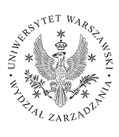Tytuł
Profile kultury w komunikowaniu międzykulturowym
Abstract
The paper classifies cultures from the angle of the syndrome consisting their basic features. To this end, I use the term 'cultural profile', pertaining to such a set of values and norms that define typical, modal, the most frequent outlooks, opinions and stances towards other people, both those belonging to it and strangers. For the needs of the paper, 'cultural profile' stands for the syndrome of features determining the autonomy, originality and unusualness of cultural groups. Cultures possess a compound and multi-factor background. Many factors decide the attitude, originality degree and autonomy of one cultural group from other groups, these include historical tradition (especially its lifespan), the scope and type of cultural heritage (differing e.g. in literate cultures and cultures without literary tradition, art or science), religion (the formalisation thereof, forms of cult, types of practices), development level of group organisation (formalised and informal cultures), the level of emotionality contained in behavioural patterns and attitudes of the people, the disposition towards other cultural groups, and many more. The term 'cultural profile' seems useful to me in the context of patterns of interpersonal and intercultural communication for the description and clarification of dominant reactions in the behaviours and stances of individuals towards dissimilarities in other people's ethnicity, race, religion and/or language. In the paper I distinguish and define the following types of cultures: 1) 'assertive' and 'non-assertive' 2) 'shame' and 'guilt' cultures 3) 'open' and 'closed' 4) 'cold' and 'hot' 5) 'formalised' and 'informal'.
Abstrakt
Tekst ma na celu dokonanie typologii kultur ze względu na syndrom podstawowych cech. Używam do tego celu terminu "profil kulturowy", odnoszącego się do takiego zespołu wartości oraz norm, które wyznaczają typowe, modalne, najczęstsze dla członków określonej grupy poglądy, zachowania oraz postawy wobec innych ludzi, zarówno do niej należących, jak i obcych. Syndrom cech, decydujący o odrębności, oryginalności oraz niezwykłości grup kulturowych, nazywam na użytek tego opracowania profilem kulturowym. Profile kulturowe mają złożone, wieloczynnikowe podłoże. O charakterze, stopniu oryginalności i odrębności jednej grupy kulturowej od innych decyduje wiele zmiennych, w tym tradycja historyczna (zwłaszcza jej długość), zasób i rodzaj dziedzictwa kulturowego (inny np. w kulturach piśmiennych, inny w takich, które nie posiadają tradycji literackiej), religia (stopień jej sformalizowania, formy kultów, rodzaje praktyk), poziom rozwoju organizacji grupowej (kultury sformalizowane i nieformalne), stopień nacechowania emocjonalnego zawarty we wzorach zachowań i postawach ludzkich, rodzaj nastawienia do innych grup kulturowych oraz wiele innych. Pojęcie "profil kulturowy" wydaje się użyteczne w kontekście wzorów interpersonalnej komunikacji międzykulturowej do opisu i wyjaśnienia dominujących w zachowaniach oraz postawach jednostek sposobów reagowania na cudzą odmienność etniczną, rasową, religijną bądź językową. Wyróżniam i charakteryzuję w tekście typy kultur: asertywne i nieasertywne, wstydu i winy, otwarte i zamknięte, zimne i gorące, sformalizowane i nieformalne.
Recommended Citation
Paleczny, T. (2009). Cultural 'profiles' in intercultural communication. Problemy Zarządzania, 7(25), 26-44. Retrieved from https://press.wz.uw.edu.pl/ems/vol7/iss25/2
First Page
26
Last Page
44
Page Count
18
Publisher
University of Warsaw








